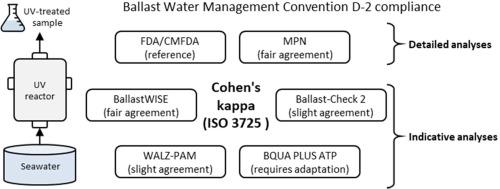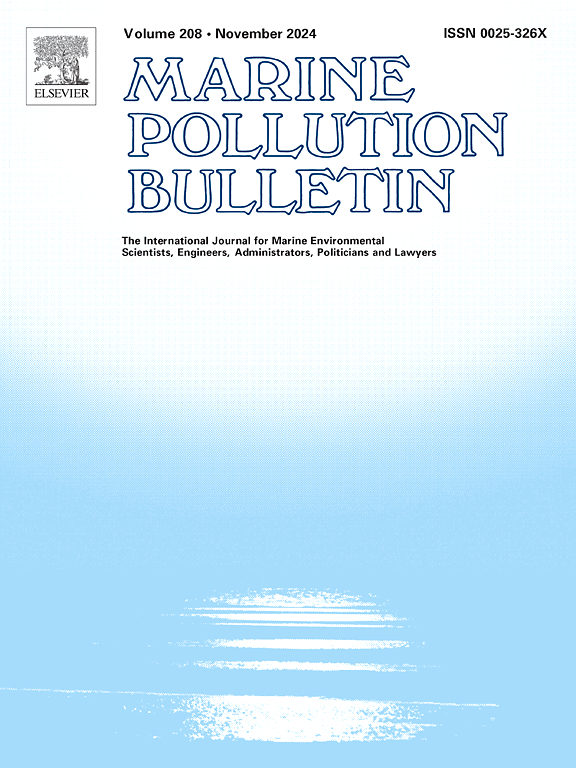Comparative assessment of four ballast water compliance monitoring devices with natural UV-treated water using IMO's monitoring approaches
IF 5.3
3区 环境科学与生态学
Q1 ENVIRONMENTAL SCIENCES
引用次数: 0
Abstract
Compliance Monitoring Devices (CMDs) are instruments indicating if the 10–50 μm organism abundance in ballast water complies with the International Maritime Organizations' discharge standard. For that, they trade the presumed accuracy of detailed methods for speed and simplicity. In an experiment using UV-treated water, four CMDs were compared, using a Cohen's kappa analysis (ISO 3725), with two detailed methods: Fluorescence Microscopy (FM) and the Most Probable Number (MPN). Of two CMDs, BallastWISE and B-QUA ATP, the standard (non)-compliance limits were adapted. Correlated to FM (non)-compliance results, ranking resulted in: 1) BallastWISE, 2) MPN, 3) Ballast-Check-2 and 4) WALZ-PAM. The ATP method had too few data for this ranking. MPN proved problematic: the abundance of 10–50 μm organism decreased while that <10 μm organisms increased. It is concluded that in case of UV-treatment, the outcome of CMD-validations will depend on the detailed method, the CMD instrument, and the (non)-compliance limits chosen.

利用国际海事组织(IMO)的监测方法,对四种压载水合规性监测装置与天然紫外线处理水进行比较评估。
合规性监测设备 (CMD) 是显示压舱水中 10-50 μm 生物丰度是否符合国际海事组织排放标准的仪器。为此,它们用详细方法的假定准确性来换取速度和简便性。在一项使用紫外线处理过的水的实验中,使用科恩卡帕分析法(ISO 3725)将四种 CMD 与两种详细方法进行了比较:荧光显微镜法(FM)和最大可能数法(MPN)。在 BallastWISE 和 B-QUA ATP 这两种 CMD 中,采用了标准(非)合规限值。与调频(非)不达标结果相关联,排序结果为1) BallastWISE,2) MPN,3) Ballast-Check-2 和 4)WALZ-PAM。ATP 方法的数据太少,无法进行排名。MPN 证明存在问题:10-50 μm 生物的丰度下降,而 10-50 μm 生物的丰度上升。
本文章由计算机程序翻译,如有差异,请以英文原文为准。
求助全文
约1分钟内获得全文
求助全文
来源期刊

Marine pollution bulletin
环境科学-海洋与淡水生物学
CiteScore
10.20
自引率
15.50%
发文量
1077
审稿时长
68 days
期刊介绍:
Marine Pollution Bulletin is concerned with the rational use of maritime and marine resources in estuaries, the seas and oceans, as well as with documenting marine pollution and introducing new forms of measurement and analysis. A wide range of topics are discussed as news, comment, reviews and research reports, not only on effluent disposal and pollution control, but also on the management, economic aspects and protection of the marine environment in general.
 求助内容:
求助内容: 应助结果提醒方式:
应助结果提醒方式:


